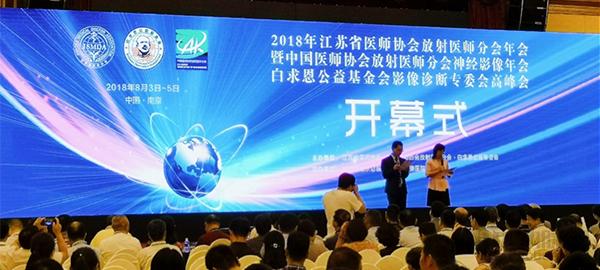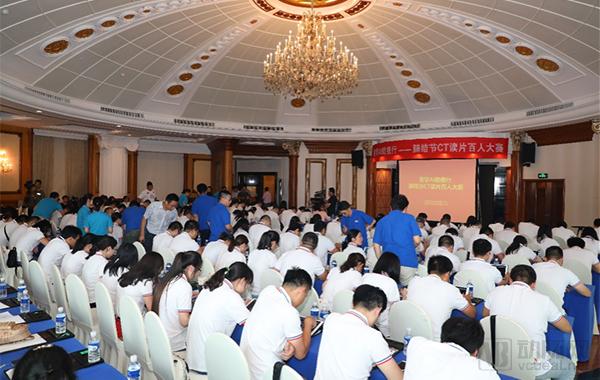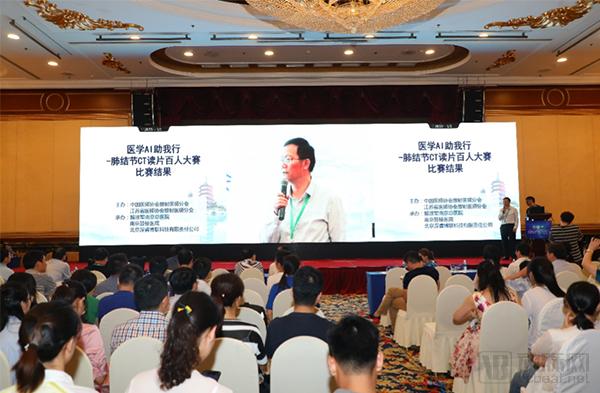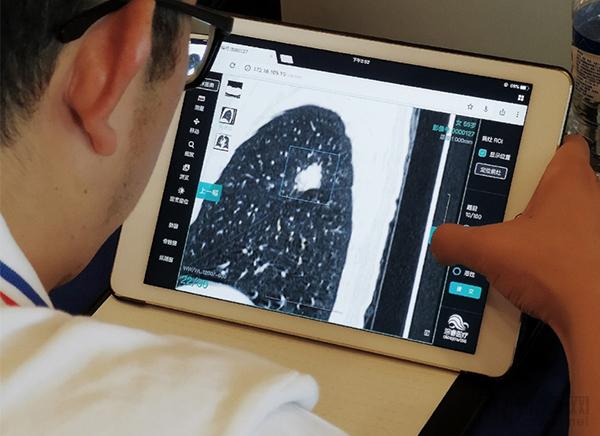According to reports, from August 3 to 5, 2018, the Jiangsu Medical Association Association Radiologists Annual Meeting and the Chinese Medical Association Radiologists Branch Neuroimaging Annual Meeting and the Bethune Public Welfare Foundation Imaging Diagnostics Committee Summit were successfully held in Nanjing. The conference invited 138 experts in medical imaging at home and abroad, including Professor Jin Zhengyu, Professor Feng Xiaoyuan, Professor Tian Jie and Professor Sanjiv Sam Gambhir. At the same time, it also attracted 1153 registered medical imaging professionals from all over the country. It has been discussed and exchanged in the development of Chinese medical imaging, resident training, diagnosis of various diseases, especially central nervous system diseases, and clinical pathways. At the same time, the medical imaging AI with high social attention has also carried out research on practical value. Opening ceremony of the conference Whether medical AI-assisted diagnosis can truly serve the clinic is one of the hot topics that the medical community has been discussing in recent years. At present, the whole society expects medical imaging AI diagnosis system, especially in the diagnosis of some common serious diseases, AI can be expected to have practical application value. Pulmonary nodules or ground-glass lesions are currently the most common imaging manifestations associated with lung cancer, with public concern and difficulty in qualitative diagnosis. In response to this major clinical problem, during the annual meeting, the Institute of Radiologists of the Chinese Medical Association and the Radiologists Branch of the Jiangsu Provincial Physician Association jointly hosted a study entitled “Medical AI Helps Me----Lung Plexus CT Reading†The public interest competition of the Hundred Talents Competition. The aim is to understand the value of AI in helping doctors improve the ability to diagnose and treat lung nodules. Medical AI helps me----Lung nodules CT reading 100 people contest site Professor Lu Guangming, director of the Medical Imaging Department of the Nanjing General Hospital of the People's Liberation Army, said that we have selected 100 cases of pulmonary nodular lesions with pathological findings, and on the one hand, artificial intelligence medical aided diagnosis system for these cases. The CT film is used for diagnosis. On the other hand, 126 junior, intermediate and senior medical imaging doctors in the third-grade hospitals and grassroots hospitals in Jiangsu Province read the same 100 CT films through the artificial intelligence cloud platform to make the lungs. Good and malignant judgment of the lesion. Through the setting of such a scenario, we hope to compare the overall difference between the accuracy of physicians and AI diagnosis, and see if there are similarities and differences between different levels of hospitals, different titles of physicians and AI in solving problems, and to what extent AI can help us solve Some practical issues. †“At the same time, we also hope to understand the current deficiencies of medical imaging AI, let our doctors use knowledge and experience to empower AI, improve medical imaging AI and improve its application value. By applying AI assistance, we can improve our diagnosis of lung cancer earlier. The possibility of more accurate diagnosis. Benefits some patients and improve their quality of life. In clinical treatment, 10%-30% of benign pulmonary nodules have been operated. Although surgical resection can alleviate the fear of lung cancer and relieve the spirit Stress, but it causes physical damage to the patient, wastes effective medical resources, and increases medical expenses. One of the main purposes of this activity is to understand whether artificial intelligence can help our physicians be benign or malignant to pulmonary nodules. Affirmative diagnosis will enhance our doctor's confidence in the differential diagnosis of benign and malignant lesions, improve the doctor's work efficiency, reduce the mental burden of some patients, and facilitate the better choice of treatment." Professor Lu Guangming, Director of the Department of Medical Imaging, Nanjing General Hospital of the People's Liberation Army, interviewed At the closing ceremony on August 5th, Professor Lu Guangming read the results of this competition. In order to more accurately evaluate the diagnosis of the same case between the radiologists at all levels, between the radiologist and the artificial intelligence system, the competition is from the area under the curve (AUC), accuracy (ACC), sensitivity (Sen) and The four dimensions of specificity (Spe) were compared. The results were confirmed by the referee Professor Lu Guangming, the deputy referee Professor Zhang Bing and Professor Ju Shenghong. From the overall data, the scores of artificial intelligence are higher than the average doctors of all the senior title group, the intermediate title group and the junior title group. In addition, we still see that the doctors have achieved good results for each participating doctor. According to the various indicators, the first four indicators all lead the artificial intelligence system. The results show that artificial intelligence can provide doctors with the basis for auxiliary diagnosis through its deep learning and core algorithms. Experienced doctors can also empower AI and constantly improve AI so that it can provide more help to doctors. Human and artificial intelligence machines have many complementarities in medical imaging diagnosis. Machines can help doctors to undertake some simple and regular work. Physicians can provide continuous learning and continuous improvement of information and ideas for machines, and more opportunities for machines. Better serve doctors. People don't expect artificial intelligence to replace physicians, but don't ignore its huge potential. Doctors should recognize, develop and apply AI early in a positive attitude. Professor Lu Guangming, Director of the Medical Imaging Department of the Nanjing General Hospital of the People's Liberation Army, announced the results of the competition. Deep Rui Medical Dr. Deep Rui Medical The WiseTM Medical Assisted Diagnostic System competed with 126 radiologists in this competition. At the same time, the reading doctor passed the deep Rui Dr. WiseTM Cloud intelligent image cloud reading CT film, quickly make good and vicious judgments. The game site radiologist is at Deep Rui Dr. WiseTMCloud Smart Image Cloud on iPad After the game, the enthusiasm of the participating physicians remained high. The case was discussed in the Shen Rui booth and the academic atmosphere was strong. After reviewing the answers, some contestants said that after the competition and the re-discussion discussion, they found that their experience was not accumulated enough, and they had insufficient confidence in the diagnosis of difficult and complicated cases, and said that if the AI ​​auxiliary diagnosis is put into use, they can improve themselves. The diagnosis of self-confidence, better service to patients, and benefit patients. After the game, the players used Deep Rui Dr. Cases of WiseTM Artificial Intelligence Medical Aided Diagnosis System In response to the results of this competition, Qiu Rui Medical Co-founder & CEO Qiao Wei said: "The artificial intelligence detection of lung nodules is the use of computer vision technology to examine suspected lesions on medical images, which is artificial intelligence in medical imaging. One of the earliest technologies to be put into practice is relatively mature. Doctors hope to see that artificial intelligence technology can make breakthroughs in the differential diagnosis of benign and malignant lung cancer, and help doctors to make more accurate diagnosis recommendations. Scientific research is more difficult, and it requires computer vision technology and other artificial intelligence technologies to be closer to the doctor's daily diagnosis work scene. This competition brings the application of artificial intelligence in the medical field to a new height. Shenrui Medical is currently the first one. Teams who dare to face challenges and publish detailed results." “I am very grateful to the organizers of the competition for giving us such an opportunity to reproduce the work scene of 126 radiologists and conduct a strict and fair test on all dimensions of our system. The doctor made sufficient preparations before the game to achieve an ultra-high level and achieved excellent results under the curve area (AUC) of 0.932 and accuracy (ACC) of 94%. In the final analysis, artificial intelligence is to serve doctors, doctors can Using AI to make final decisions on diagnosis, and the continuous improvement of AI always requires doctors to use rich clinical experience and knowledge empowerment. Human-machine cooperation is the direction of our efforts. In the future, we will work more closely and closely with doctors. To jointly expand the medical application scenarios of artificial intelligence. Dr. Shen Rui, it is no longer difficult to see a doctor." Yancheng Rongtai Labware Co.,Ltd , https://www.shtestlab.com




